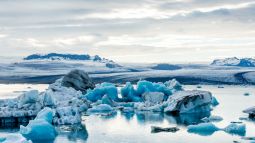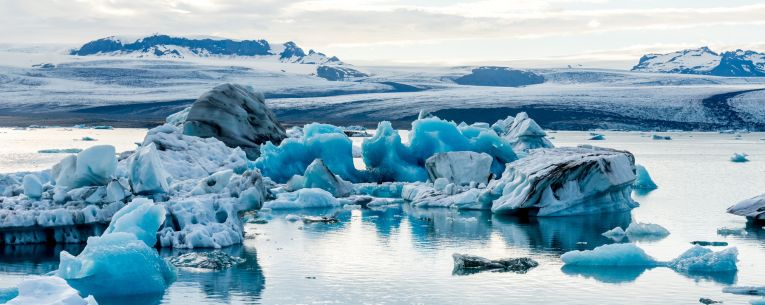The most popular hiking destinations in Europe are well-known for good reason. Many of these loved routes have outstanding panoramic views, towering mountains that inspire awe, and prime opportunities for spotting wildlife.
But popularity brings crowds, which isn’t ideal for hikers who prefer peace and solitude in nature. (Or those who want to snag a shot for Instagram without 50 people in the background.)
When you want to go off the beaten path, look for a destination dupe! Consider some less-crowded alternatives to the most popular hiking destinations in Europe. These treks have the same incredible features without the high traffic.
Popular destination: Seven Sisters Cliffs Walk, South Downs, England
Part of the Sussex Heritage Coast, the Seven Sisters Cliffs are one of the most famous natural landmarks in Europe. Tall and gleaming white, the sea cliffs were formed from chalk sedimentary rock, eroded by geological forces and the English Channel.
“The chalk is the remains of tiny sea creatures that lived in this sea, and millions of years of deposits resulted in a huge chalk dome that now covers a vast area across Southern England and Northern France,” writes Seven Sisters South Down National Park.
A popular hike for accessing the Seven Sisters is the 13.2-mile trek from Seaford to Eastbourne. The charming route is easily accessible and is an easy day trip from London, so expect big crowds on warm weekends. Along the way, check out the lighthouse at Beachy Head and stop for lunch on the patio at Cuckmere Inn pub.
A quiet alternative that still gives you the coastal feel:
Sandwood Bay, Kinlochbervie, Scotland
A visit to Sandwood Bay will take you off the beaten path. Located on the remote northwest coast of Scotland, the nearest road to this quiet, scenic beach is four miles away. Sandwood Bay also offers dramatic cliffs, formed of sandstone and gneiss — darker than the chalk of the Seven Sisters. Stunning, pink sand beaches and a jagged sea stack all make the trek to Sandwood Bay worth the journey. Access Sandwood Bay via the nine-mile Sandwood Bay Walk, which offers gorgeous and diverse Scottish terrain including sand dunes, lochs, peat bogs, a ruin and views of Cape Wrath Lighthouse.
Popular destination: Jokulsarlon Glacier Lagoon, Iceland
A popular stop on the famous Ring Road, Jokulsarlon Lagoon in Jokulsarlon National Park forms the deepest natural lake in Iceland. The lagoon is famous for the Diamond Beach natural wonder, formed by ice washing up on the black sand beach.
“The name Diamond Beach is born as the huge blue icebergs glisten as the sunlight shines through, contrasting on the black sand beach like diamonds, writes Bus Travel Ireland.
The length of the lagoon’s black sand beach is a little under seven miles long, though there is no designated trail. Expect crowds, particularly in the summer months. Along the way, you will be treated to stunning views of Jokulsarlon glacial volcano and multiple seal sightings.
Another icy lagoon worth a visit:
Fjallsarlon Glacier Lagoon, Iceland
While Jarkulsalon tends to steal the spotlight, Fjallsarlon in southeast Iceland offers a more intimate, quiet setting to observe the beauty of an Icelandic glacier lagoon. Enjoy views of Vatnajokull; the largest glacier in Europe, portions of the Vatnajokull ice cap and soaring volcanic ridges — geographic reminders that Iceland is truly the land of fire and ice.
If you want an alternative to hiking, there are boat tours that can get you up close and personal with the icebergs slowly floating in the lagoon’s frigid waters. Many tranquil hikes surround Fjallsarlon and you can book a guided, four-hour hike of the area.
Popular destination: Parrizal de Beceite, Spain
Located within the Mattarana River Nature Reserve in Teruel, part of the autonomous community of Aragon, Parrizal de Beceite is a paradise for nature lovers. The nearly six-mile route takes you through steep and narrow gorges, where you’ll traverse walkways suspended over the clear, turquoise waters of the Mattarana River for much of the way. The landscape is a diverse mix of forests and limestone rock formations.
Due to the large number of visitors to this protected area, there are access limitations. Capacity is capped and entry is kept to a strict schedule during certain times of the year. But if you do make the trek, be sure to take a moment to take the detour that leads to the Fenellassa cave paintings, dating to 3500 BC – you won’t regret it.
Less crowded but equally inviting river hikes:
If you want to beat the crowds, other gorgeous natural areas in Aragon offer incredible, suspended riverside walkways similar to Parrizal de Beceite. Camino Natural del Rio Guadalaviar also starts near the city of Teruel and meanders through a canyon of the Guadalaviar river and more open, wooded sections. The nearly five-mile route is great for wildlife spotting. Keep your eyes peeled for sightings of birds of prey such as golden eagles, Egyptian vultures and griffon vultures.
Pasarelas de Alquezar, also in Aragon, takes hikers over, under and beside the Vero River. You will need to purchase tickets to access this route, but it is well worth the modest fee. The walk starts in the charming old town of Alquezar, which you should leave plenty of time to explore before or after your river walk. While in Alquezar, take a tour of La Colegiata de Santa Maria, one of the oldest cloisters in Aragon.
Popular destination: Stoos Ridge Trail, Lake Lucerne, Switzerland
One of the most popular hikes in Switzerland, the Stoos Ridge Trail, features what may easily be one of the most beautiful panoramic views in the world. You will be mesmerized by the beauty of the Schwyz Mountains and the peaks of Uri and Glarus. As you walk along Stoos Ridge, on your left below is Lake Lucerne; Muota Valley is to your right.
Take one of several chair lifts or a cable car up to the ridge to start the trail. Be careful — the trail is extremely steep on either side and while well established, it lacks safety railing in some places. The nearly three-mile hike is expected to take roughly two hours and is open from May through October.
A quieter trail with gorgeous lake and mountain views:
Niederbauen Kulm Hike
Lake Lucerne is among one of the most touristed places in Europe and it’s easy to see why. Lucerne’s expansive, azure waters are surrounded by mountains and lush meadows; a hiker’s paradise. But there are still some quiet places enjoyed by the locals. The Niedederbauen Kulm Hike is off the beaten path and offers lake and mountain views similar to Stoos Ridge.
From Emmeten, take a cable car up to the Niederbauen mountain station. As soon as you exit the car, there’s an insanely gorgeous view of Lake Lucerne before you’ve even started the hike. The circular route takes about two hours to complete. Afterward, have lunch at berggasthaus Niderbauen restaurant on the mountain.
“With one of the best mountain restaurants in Switzerland, this mountain is an additional attraction. A must for all panorama lovers, peace seekers, photographers and gourmets,” writes Switzerland by Locals.
Popular destination: Mount Olympus, Greece
At 2917m tall, Mount Olympus is the tallest mountain in Greece. If you’re interested in mythology, you probably know Mount Olympus as the home of the 12 Greek Gods. Olympus boasts rich history and an impressive 52 peaks, which draw thousands of tourists annually to Olympus National Park. Popular peaks to climb are the summit, Mytikas, Skala Peak (2,882) and Skolio Peak (2,911m).
Olympus offers multiple paths of varying difficulty and length. The most common path to the summit typically takes two days, with an overnight in a mountain hut. The terrain and weather can be harsh, so a guide is advisable. There are also day tours of the mountain. Sanctuary ruins and artifacts signifying Olympus’ religious role in ancient Greece add to the mountain’s allure.
A less traveled path featuring mythology and history:
The Trail of Healing, Abeliona, in the southern Peloponnese mountains, Greece
The Trail of Healing spans nearly five miles between the village of Abeliona in Messinia and the Temple of Apollo Epicurius in Bassae, a UNESCO-protected site. Apollo was the ancient Greek god of music, light, harmony and world order.
“The route climbs through a dense chestnut forest with centuries-old trees that offer shade and a magnificent view of the Lykeo and Tetrazi Mountains,” writes Discover Greece.
While on your pilgrimage to the Temple of Apollo, you will also pass centuries-old huts that give a window into life in ancient Greece.
As soon as you book your next hiking adventure, purchase travel insurance. You should know that your domestic health insurance plan may not fully cover you abroad. Many international healthcare providers require up-front payment for services.
Additionally, if you are hiking remotely and experience an accident, emergency medical evacuation can be costly. An Allianz Travel Insurance plan with emergency medical benefits may help if you have a health emergency overseas.
Allianz Travel Insurance plans also offer trip cancellation benefits that can reimburse for certain non-refundable expenses if your trip is canceled or interrupted due to a reason included in your policy. Our plans with baggage benefits can also reimburse certain non-refundable expenses if your luggage is lost, stolen or damaged while traveling.
Get a quote to find out how we can protect your next hiking adventure in Europe.
Related Articles








Share this Page